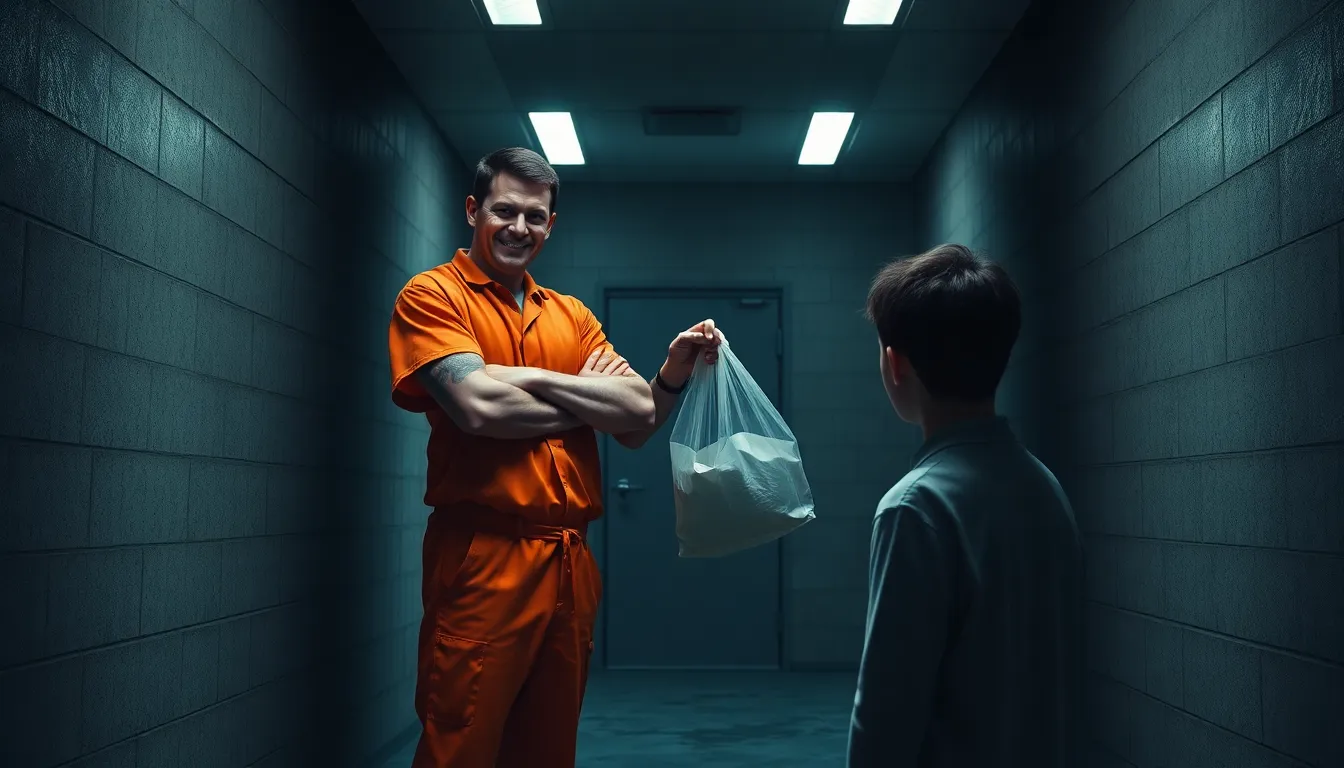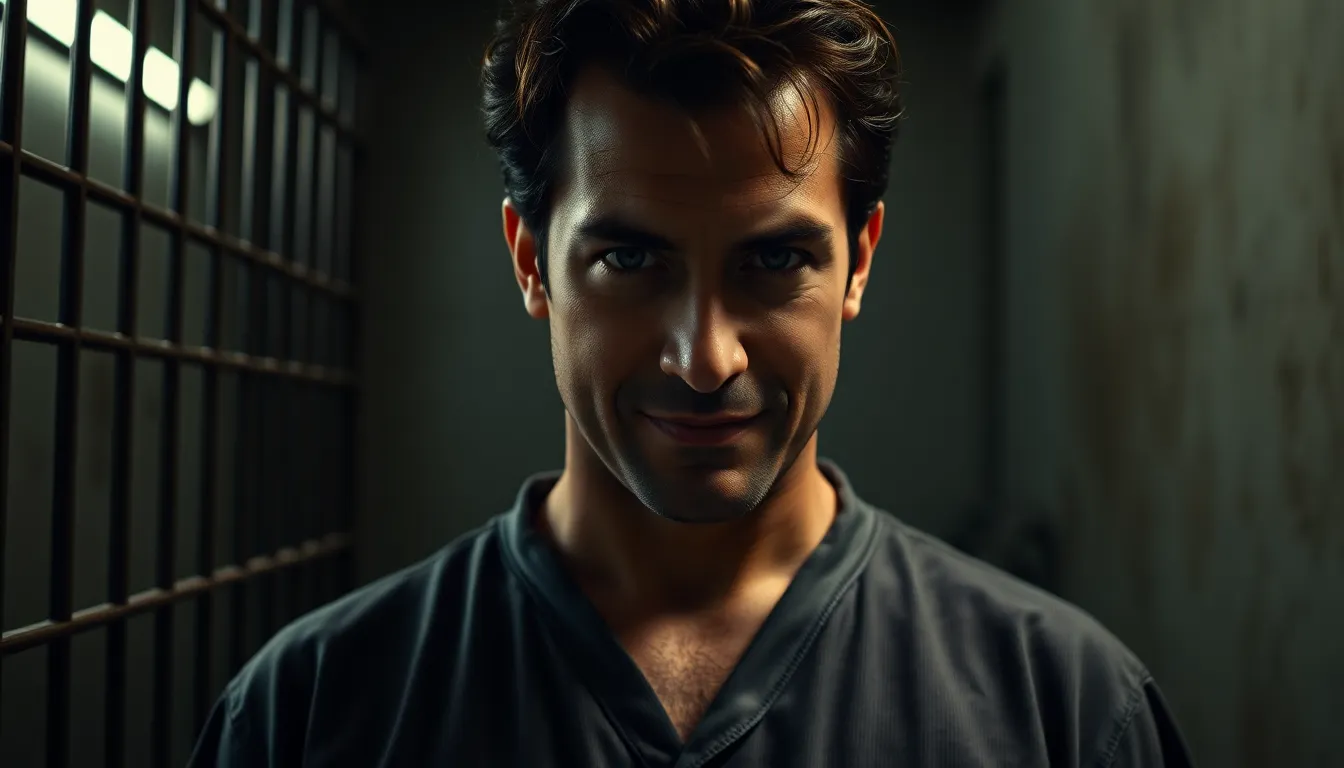When we think of iconic television villains, few characters send chills down our spines quite like Theodore “T-Bag” Bagwell from Prison Break. This cunning and manipulative inmate became one of the most memorable antagonists in TV history, captivating audiences with his southern charm and deadly intelligence throughout the series.
T-Bag’s journey from a maximum-security prisoner at Fox River State Penitentiary to his various escape attempts showcases the complex character development that made Prison Break a global phenomenon. His twisted relationship with fellow inmates and his role in Michael Scofield’s elaborate escape plan created some of the show’s most tension-filled moments.
We’ll explore how this psychopathic character evolved throughout the series, examining his backstory, motivations, and the unforgettable performances that brought him to life. From his manipulative tactics to his survival instincts, T-Bag remains a fascinating study in criminal psychology that continues to intrigue fans years after the show’s original run.
T-Bag’s Role in the Fox River Eight Escape Plan
Theodore “T-Bag” Bagwell became an unexpected yet crucial component of Michael Scofield’s meticulously crafted escape strategy. We witnessed how his inclusion transformed the entire ever-changing of the breakout attempt.
His Forced Integration into Michael’s Plan
T-Bag discovered Michael’s escape plan through his manipulative intelligence gathering within Fox River State Penitentiary. We observed how he leveraged this knowledge to blackmail his way into the group, threatening to expose the entire operation unless included. His integration wasn’t voluntary on Michael’s part—it represented a calculated risk that could either strengthen or destroy their chances.
Michael reluctantly accepted T-Bag’s participation because eliminating him posed greater risks than inclusion. We learned that T-Bag’s connections within the prison’s criminal network provided valuable resources and information. His knowledge of guard routines and prison politics became instrumental in handling obstacles that other escapees couldn’t handle alone.
The psychological warfare T-Bag employed against fellow inmates created both opportunities and complications for the escape team. We noticed how his reputation for violence served as a deterrent to potential informants while simultaneously making him a liability. His unpredictable nature forced Michael to constantly adapt his plans to account for T-Bag’s volatile behavior.
The Hand Severing Incident and Reattachment
T-Bag’s hand became permanently attached to Michael via handcuffs during the escape’s final moments, creating an unprecedented crisis. We witnessed one of television’s most shocking scenes when John Abruzzi severed T-Bag’s hand with an axe to prevent him from slowing down the group’s escape.
The immediate aftermath showcased T-Bag’s remarkable survival instincts as he retrieved his severed hand and sought emergency medical attention. We observed his desperate race against time to reach a hospital where doctors could attempt reattachment surgery. This incident highlighted his determination to survive even though overwhelming physical trauma.
Medical professionals successfully reattached T-Bag’s hand through microsurgery, though limited functionality remained throughout subsequent episodes. We noted how this injury became both a physical reminder of his desperation and a symbol of his resilience. The reattachment process required extensive rehabilitation that T-Bag had to manage while evading capture.
His recovery period demonstrated remarkable adaptability as he learned to compensate for reduced hand mobility. We tracked how T-Bag developed new techniques for basic tasks while maintaining his manipulative edge over others. The injury never fully healed, serving as a permanent consequence of his forced participation in the Fox River Eight escape plan.
T-Bag’s Most Memorable Prison Break Moments

We’ve witnessed countless shocking scenes throughout Prison Break, but T-Bag’s most memorable moments showcase his cunning manipulation and ruthless survival instincts that made him both terrifying and captivating.
The Sick Bag Confrontation
Violence erupted when T-Bag cornered a fellow inmate using nothing more than psychological warfare and a sick bag as his weapon of intimidation. This scene demonstrated his ability to transform ordinary objects into tools of terror, establishing his reputation as someone who could strike fear without traditional weapons. We watched as he pressed the bag against his victim’s face, using the threat of suffocation to extract information about potential snitches within the prison population.
Terror filled the air as T-Bag whispered threats while maintaining his characteristic calm demeanor, proving that his mind was his most dangerous weapon. The confrontation revealed his understanding of prison hierarchy and his willingness to use extreme measures to maintain his position of power. We saw how he combined physical intimidation with psychological manipulation, creating a lasting impact on both his victim and viewers.
Strategic positioning allowed T-Bag to corner his target in the infirmary, where he knew security would be minimal and escape routes limited. His choice of location demonstrated his calculated approach to violence, always ensuring he had the upper hand before making his move. We observed how he used environmental advantages to maximize the effectiveness of his intimidation tactics.
His Manipulation Tactics with Other Inmates
Psychological control became T-Bag’s primary method for maintaining influence over weaker inmates, using their fears and insecurities as leverage for his own protection. He identified vulnerable prisoners within days of their arrival, studying their weaknesses and crafting personalized approaches to gain their loyalty. We witnessed how he offered protection in exchange for favors, creating a network of inmates who owed him debts.
Information gathering served as the foundation of T-Bag’s power structure, as he collected secrets about other inmates’ families, crimes, and personal vulnerabilities. His conversations with newcomers appeared casual, but every question was designed to extract useful intelligence he could later weaponize. We saw him use this information to blackmail inmates into compliance, ensuring their silence about his activities.
False friendship allowed T-Bag to manipulate inmates who craved companionship, offering them acceptance while secretly planning to exploit their trust. He would share carefully selected personal stories to create emotional bonds, making his targets feel special and understood. We observed how he gradually increased his demands on these relationships, transforming friendship into servitude.
Resource acquisition motivated many of T-Bag’s manipulation tactics, as he convinced other inmates to share their commissary items, medications, and contraband materials. His persuasive abilities turned desperate prisoners into willing accomplices who believed they were gaining his protection. We noted how he created artificial scarcity around his “friendship,” making inmates compete for his attention and approval.
T-Bag’s Post-Escape Survival Strategy

Once outside Fox River’s walls, T-Bag proved his survival instincts extended far beyond prison manipulation. We witnessed his transformation from desperate fugitive to calculated predator as he forged his own dangerous path.
His Separate Path from the Other Escapees
T-Bag deliberately abandoned the group immediately after the escape, recognizing that staying together would increase capture risks. We observed his strategic decision to distance himself from Michael’s team, understanding that his severed hand made him a liability in their eyes. His choice to go solo demonstrated his self-preservation instincts and unwillingness to depend on others who viewed him as expendable.
Breaking away from the other escapees allowed T-Bag to pursue his own agenda without compromise. We saw him prioritize personal vendettas and criminal opportunities over the group’s collective safety. His independent approach proved both advantageous and dangerous, as it freed him from group limitations while exposing him to greater individual risk.
The separation highlighted T-Bag’s fundamental understanding that loyalty among criminals remains temporary. We noticed how he anticipated eventual betrayal from his fellow escapees, choosing to strike out alone rather than wait for abandonment. His decision reflected years of prison survival where trusting others meant potential death or capture.
The Utah Storyline and New Identity
T-Bag’s Utah chapter showcased his most disturbing transformation as he assumed the identity of Gary Miller. We witnessed his infiltration of a suburban family, where he used his manipulative skills to gain the trust of Susan Hollander and her children. His ability to present himself as a caring substitute teacher and father figure revealed the terrifying extent of his deception capabilities.
Creating the Gary Miller persona required extensive research and psychological preparation that T-Bag executed flawlessly. We observed how he studied the real Gary Miller’s background, mannerisms, and teaching credentials to construct a believable false identity. His attention to detail in maintaining this facade demonstrated his intelligence and adaptability beyond his criminal reputation.
The Utah storyline exposed T-Bag’s most dangerous quality: his ability to blend into normal society while harboring violent intentions. We saw him balance genuine moments of domestic tranquility with calculated predatory behavior, creating an unsettling psychological portrait. His temporary integration into the Hollander family revealed how effectively he could mask his true nature when survival demanded it.
Living as Gary Miller allowed T-Bag to experience a twisted version of the normal life he’d never had. We witnessed moments where he seemed genuinely invested in the family ever-changing, suggesting complex psychological layers beneath his criminal exterior. But, his inevitable return to violence proved that his fundamental nature remained unchanged even though the convincing performance.
T-Bag’s Return in Season 2’s Manhunt

Theodore Bagwell’s freedom proves short lived as Season 2 transforms him from escaped convict to hunted fugitive. We witness his desperate attempts to stay ahead of law enforcement while pursuing his own twisted agenda.
His Pursuit by FBI Agent Mahone
Agent Alexander Mahone becomes T-Bag’s primary nemesis in Season 2, utilizing advanced profiling techniques to track the escaped convict. Mahone studies T-Bag’s psychological patterns, recognizing his need for control and predatory behavior as predictable weaknesses. The FBI agent’s methodical approach contrasts sharply with T-Bag’s impulsive nature, creating a deadly cat and mouse game.
T-Bag’s paranoia intensifies as Mahone closes in on his Utah hideout, forcing him to abandon his Gary Miller identity. We see how the severed hand becomes a crucial piece of evidence when Mahone’s team discovers it, providing DNA confirmation and psychological insights into T-Bag’s survival instincts. Mahone uses this discovery to predict T-Bag’s next moves, understanding that the convict’s pride won’t allow him to remain permanently disabled.
The manhunt escalates when Mahone realizes T-Bag’s attachment to the Miller family creates vulnerability. Federal agents coordinate surveillance operations across multiple states, tracking T-Bag’s medical visits for prosthetic fittings and psychological evaluations. Mahone’s team monitors hospital records, knowing T-Bag’s vanity will drive him to seek reconstructive surgery even though the risks.
The Panama Revelation
T-Bag’s connection to the larger conspiracy emerges through his knowledge of Panama and the Company’s operations. We discover that his criminal network extends beyond simple predatory behavior, linking him to money laundering schemes in Central America. This revelation transforms T-Bag from a random escapee into a valuable asset for both law enforcement and criminal organizations.
His memories of Panama conversations overheard in Fox River become crucial intelligence for the FBI investigation. T-Bag’s eidetic memory for details serves him well as he recalls exact locations, code names, and financial transactions mentioned by other inmates. Mahone recognizes this intelligence value, shifting his strategy from simple capture to potential cooperation agreements.
The Panama money trail leads T-Bag to pursue the buried treasure independently, believing his inside knowledge gives him advantages over the other escapees. We see his calculated decision to leverage this information as bargaining power with various interested parties. His understanding of the Company’s structure makes him a dangerous wildcard who could expose or protect their operations depending on personal benefit.
T-Bag’s pursuit of the Panama money demonstrates his evolution from opportunistic predator to strategic criminal mastermind. Federal agents track his movements through financial institutions and currency exchange records, realizing he’s following a predetermined path toward the hidden funds. This chase sequence showcases T-Bag’s resourcefulness as he stays one step ahead while pursuing his ultimate prize.
T-Bag’s Evolution Throughout Prison Break Seasons

T-Bag’s character journey spans multiple seasons, showcasing remarkable transformations that blur traditional villain archetypes. We witness his progression from a straightforward antagonist to a complex figure whose motivations shift dramatically throughout the series.
From Villain to Anti-Hero Moments
Season 3 introduced T-Bag’s most important moral shift when he chose to help Michael Scofield even though having many opportunities for betrayal. His decision to protect innocent inmates at Sona prison revealed glimpses of humanity beneath his predatory exterior.
His assistance in exposing corrupt guards demonstrated how survival instincts could align with ethical choices. T-Bag’s knowledge of prison hierarchies proved invaluable when he warned Michael about deadly power struggles within Sona’s walls.
During Season 4, we observed T-Bag’s unexpected cooperation with the protagonists as he provided crucial intelligence about The Company’s operations. His intimate understanding of criminal networks became an asset rather than a threat to the team’s mission.
The Utah storyline marked his darkest period, yet even then, T-Bag showed restraint when facing the suburban family he’d infiltrated. His internal struggle between predatory instincts and genuine affection for normalcy created compelling character complexity.
Season 5 revealed T-Bag’s willingness to sacrifice personal freedom to help Sara Tancredi locate Michael in Yemen. This selfless act represented his most heroic moment, proving that redemption remained possible even though his violent past.
His Relationship with Sara Tancredi
Sara initially viewed T-Bag as the embodiment of everything wrong with the criminal justice system during their early Fox River encounters. Her medical oath compelled her to treat his severed hand professionally, even though her obvious disgust and fear.
Their ever-changing shifted when T-Bag began providing information about The Company’s conspiracy, forcing Sara to reassess her judgment of irredeemable criminals. She recognized his intelligence and strategic value while maintaining appropriate caution around his unpredictable nature.
During the Yemen crisis, Sara reluctantly accepted T-Bag’s offer to help locate Michael, marking their first genuine collaboration. His knowledge of Middle Eastern criminal networks proved essential to her mission, creating an unlikely partnership born from desperation.
T-Bag’s protective instincts emerged when Sara faced danger in foreign territory, surprising both characters with his capacity for selfless action. He provided crucial intelligence about Poseidon’s organization without expecting personal gain or reduced sentences.
Their final interactions demonstrated mutual respect earned through shared trauma and common goals. Sara acknowledged T-Bag’s contributions while maintaining healthy boundaries, showing how professional relationships can transcend personal history when survival demands cooperation.
T-Bag’s Impact on Prison Break’s Overall Narrative

T-Bag’s presence fundamentally reshaped Prison Break’s storytelling trajectory, transforming what could have been a straightforward escape drama into a complex psychological thriller. His character served as both catalyst and consequence, driving major plot developments while forcing other characters to confront their moral boundaries.
How He Drove Key Plot Points
T-Bag’s forced inclusion created the escape plan’s most dangerous variable. Michael’s original blueprint required constant revision because T-Bag’s unpredictable nature threatened to expose the entire operation. We witnessed how his blackmail tactics fundamentally altered the group dynamics, forcing Michael to accommodate someone he couldn’t trust or control.
The hand amputation incident became a pivotal moment that defined Season 2’s trajectory. This brutal event didn’t just provide shocking television; it established T-Bag’s separation from the group and launched his independent storyline. His pursuit of medical attention led to the Gary Miller identity assumption, creating an entirely new narrative thread that explored domestic infiltration.
His connection to the Panama money conspiracy elevated the stakes beyond simple escape drama. T-Bag’s eidetic memory for financial details transformed him from a liability into a strategic asset, connecting the prison break to larger criminal enterprises. This development gave Agent Mahone legitimate reasons to pursue T-Bag specifically, creating the show’s most compelling hunter-predator relationship.
T-Bag’s evolution from antagonist to reluctant ally redefined the series’ moral industry. Season 3’s Sona storyline required his cooperation to expose corruption, while Season 4’s Company conspiracy made his intelligence invaluable to the protagonists. His willingness to sacrifice personal freedom in Season 5 to help locate Michael demonstrated how far his character had traveled from pure villain to complex antihero.
His Influence on Other Characters’ Development
Michael Scofield’s strategic thinking reached new heights when dealing with T-Bag’s unpredictability. We observed how Michael’s methodical planning had to incorporate wild cards and contingencies specifically because T-Bag’s actions couldn’t be predicted or controlled. This forced evolution made Michael a more complete strategist rather than just a brilliant planner.
Lincoln Burrows’ protective instincts intensified whenever T-Bag posed threats to innocent people. The Gary Miller storyline particularly triggered Lincoln’s moral compass, showing us how his character prioritized civilian safety over escape logistics. T-Bag’s presence forced Lincoln to make ethical choices that revealed his fundamental decency even though his criminal circumstances.
Sara Tancredi’s professional judgment and personal trauma intertwined through her interactions with T-Bag. Initially viewing him as everything wrong with the system, Sara’s perspective evolved as T-Bag provided crucial intelligence about The Company. Their Yemen collaboration showed us how shared goals could overcome personal revulsion, developing Sara’s ability to compartmentalize emotions for strategic advantages.
Agent Mahone’s obsessive nature found its perfect target in T-Bag’s chaotic criminal patterns. Their psychological chess match pushed Mahone to employ increasingly sophisticated profiling techniques, demonstrating his evolution from bureaucratic agent to dedicated hunter. T-Bag’s unpredictability challenged Mahone’s methodical approach, forcing him to adapt his investigative methods.
The supporting cast members consistently revealed their true natures when confronted with T-Bag’s manipulations. Characters like Sucre, C-Note, and Abruzzi all showed their moral boundaries through their interactions with T-Bag. His presence served as a litmus test that exposed each character’s capacity for violence, compromise, or ethical standing under extreme pressure.
T-Bag’s Most Quotable Lines and Scenes

T-Bag’s dialogue delivery transformed ordinary conversations into psychological warfare, making him one of television’s most quotable villains. His verbal confrontations became defining moments that showcased both his intelligence and his menacing nature.
His Southern Drawl and Menacing Dialogue
Theodore Bagwell’s distinctive Southern accent became his signature weapon, transforming simple words into chilling threats that haunted both characters and viewers. His deliberate speech patterns created an unsettling contrast between his polite demeanor and violent intentions. We witnessed how T-Bag weaponized politeness, using phrases like “much obliged” and “if you’d be so kind” to mask his predatory nature.
“Pretty” served as T-Bag’s most recognizable catchphrase, appearing in countless scenes as both endearment and threat. He’d address fellow inmates, guards, and even victims with this seemingly innocent word that carried layers of manipulation and danger. The term became so associated with his character that fans immediately recognized T-Bag’s presence whenever it appeared in dialogue.
His philosophical musings often caught other characters off guard, revealing an unexpected depth beneath his criminal exterior. T-Bag would quote literature, reference historical events, and deliver complex monologues that demonstrated his intelligence while maintaining his threatening edge. These moments showed viewers that his danger stemmed not just from physical violence but from psychological manipulation.
Prison Break’s writers crafted T-Bag’s threats to sound almost poetic, using metaphors and imagery that made his intentions clear without explicit language. He’d describe violence using flowery Southern expressions, creating a disturbing juxtaposition that made his words more memorable than straightforward threats. This linguistic styling became central to understanding how T-Bag maintained power through fear and respect.
Iconic Confrontations with Michael Scofield
Michael Scofield’s first encounter with T-Bag established the psychological chess match that would define their relationship throughout the series. T-Bag immediately recognized Michael’s intelligence and began probing for weaknesses, using his signature blend of respect and menace. We saw how Michael struggled to maintain his composure while T-Bag circled him verbally, testing boundaries and establishing dominance.
“You’re quite the artist, aren’t you?” became one of T-Bag’s most chilling observations about Michael’s tattoo blueprint, delivered with a knowing smile that suggested he understood more than he revealed. This moment demonstrated T-Bag’s ability to piece together information and use knowledge as leverage. Michael’s careful response showed how even brilliant strategists had to navigate T-Bag’s verbal traps carefully.
Their confrontation about the escape plan revealed the power dynamics that would shape Season 1’s tension, with T-Bag forcing his inclusion through psychological pressure rather than physical threats. He used Michael’s protective instincts against him, making it clear that exposure would harm innocent people. This scene showcased how T-Bag’s intelligence made him dangerous in ways that brute force couldn’t match.
T-Bag’s farewell speech before the hand amputation created one of the series’ most memorable exchanges, combining his philosophical nature with genuine vulnerability. He addressed Michael directly, acknowledging their strange partnership while maintaining his characteristic verbal flourishes. Michael’s conflicted expression during this moment revealed how T-Bag’s complex nature challenged simple good versus evil categorizations.
“Pretty boy, you and I aren’t so different” represented T-Bag’s most direct psychological assault on Michael’s moral foundation, suggesting similarities that Michael desperately wanted to deny. This line appeared in multiple variations throughout their interactions, always delivered at moments when Michael questioned his own methods. We witnessed how this particular observation haunted Michael, forcing him to examine whether survival justified his increasingly morally ambiguous choices.
T-Bag’s Legacy in Television Crime Drama

T-Bag’s influence on modern television crime drama extends far beyond Prison Break’s original run. We’ve witnessed how his character redefined what audiences expect from complex antagonists in serialized television.
Robert Knepper’s Award-Worthy Performance
Robert Knepper transformed Theodore Bagwell from a written character into a living, breathing psychological study that captivated audiences worldwide. His nuanced portrayal balanced T-Bag’s predatory nature with moments of unexpected vulnerability, creating layers that few actors could have achieved.
Knepper’s mastery of T-Bag’s distinctive Southern dialect became an integral part of the character’s identity. He delivered each line with calculated precision, using his voice as both weapon and charm depending on the situation. The actor’s ability to switch between menacing whispers and explosive outbursts kept viewers on edge throughout every scene.
Physical acting choices further elevated Knepper’s performance beyond typical villain portrayals. He incorporated subtle body language that conveyed T-Bag’s constant awareness of his surroundings and potential threats. His portrayal of the hand amputation recovery showcased remarkable attention to detail, maintaining consistent physical limitations while adapting his character’s movements.
Industry recognition for Knepper’s work included multiple award nominations and critical acclaim from television reviewers. His performance earned praise from the Television Critics Association and garnered consideration for Outstanding Supporting Actor nominations. Critics consistently highlighted his ability to make audiences simultaneously fear and empathize with T-Bag.
Fellow actors on Prison Break have publicly credited Knepper with elevating their own performances through his commitment to character authenticity. Wentworth Miller and Dominic Purcell both acknowledged how working opposite Knepper’s T-Bag forced them to bring deeper intensity to their roles.
Fan Reception and Cultural Impact
Prison Break fans consistently rank T-Bag among television’s greatest villains, with online polls showing him competing with iconic characters from Breaking Bad and The Sopranos. His popularity transcended the show’s original demographic, attracting viewers who specifically tuned in to watch his psychological manipulations unfold.
Social media discussions about T-Bag continue years after Prison Break’s conclusion, with fan theories and character analysis videos generating millions of views. Reddit communities dedicated to the show frequently debate T-Bag’s moral evolution and whether his later heroic moments constitute genuine redemption.
Merchandise featuring T-Bag’s most memorable quotes became bestsellers among Prison Break collectibles. His catchphrases and philosophical observations found their way into popular culture references across various media platforms.
Academic studies examining antihero characters in modern television frequently cite T-Bag as a prime example of complex villain development. Psychology professors use his character arc to illustrate concepts of moral ambiguity and audience sympathy for traditionally unsympathetic characters.
T-Bag’s influence on subsequent television crime dramas is evident in characters like Ramsay Bolton from Game of Thrones and Anton Chigurh inspired villains. Writers and showrunners have acknowledged studying T-Bag’s character development when creating their own morally complex antagonists.
International audiences embraced T-Bag’s character with equal enthusiasm, making Prison Break a global phenomenon partly due to his compelling presence. His character’s universal appeal demonstrated how well crafted psychological complexity transcends cultural boundaries in television storytelling.
Conclusion
Theodore “T-Bag” Bagwell stands as a testament to the power of complex character development in television drama. Robert Knepper’s masterful portrayal transformed what could have been a one-dimensional villain into a multifaceted character that continues to fascinate audiences worldwide.
T-Bag’s journey from maximum-security predator to reluctant ally demonstrates how skillful writing can challenge our perceptions of morality and redemption. His presence didn’t just enhance Prison Break’s narrative—it fundamentally changed how we view antagonists in modern television.
The character’s enduring popularity proves that audiences crave psychological depth over simple good-versus-evil dynamics. T-Bag’s legacy extends far beyond Prison Break itself inspiring countless other complex villains in contemporary crime dramas.
We’ve witnessed how one character can elevate an entire series transforming a simple escape story into a profound exploration of human nature and moral ambiguity that resonates with viewers long after the final episode.
Frequently Asked Questions
Who is T-Bag in Prison Break?
Theodore “T-Bag” Bagwell is one of Prison Break’s most iconic villains, portrayed by Robert Knepper. He’s a maximum-security inmate at Fox River State Penitentiary who manipulates his way into Michael Scofield’s escape plan by threatening to expose their operation. Known for his Southern drawl, psychological manipulation tactics, and unpredictable nature, T-Bag becomes a key player throughout the series.
How did T-Bag become part of the escape plan?
T-Bag forced his way into Michael’s escape plan through blackmail and manipulation. He discovered details about the escape operation and threatened to expose it to the guards unless he was included. Despite being reluctant, Michael calculated that T-Bag’s prison connections and resources were valuable, making his inclusion a necessary risk for the plan’s success.
What happened to T-Bag’s hand during the escape?
During the escape, John Abruzzi severed T-Bag’s hand to prevent him from slowing down the group. This shocking incident occurred when T-Bag became a liability to the escaping inmates. Despite this traumatic injury, T-Bag demonstrated remarkable survival instincts by seeking medical attention for reattachment surgery, though the injury permanently affected his mobility and served as a lasting reminder of the escape.
What is the Gary Miller storyline about?
The Gary Miller storyline occurs in Season 2, where T-Bag assumes a false identity and infiltrates a suburban Utah family. Using his manipulative skills, he gains their trust while harboring violent intentions. This disturbing transformation showcases T-Bag’s ability to blend into normal society while maintaining his predatory nature, revealing the unsettling complexity of his character development.
How does T-Bag’s character evolve throughout the series?
T-Bag undergoes significant evolution from a pure antagonist to a complex anti-hero. In later seasons, he shows glimpses of humanity by helping Michael Scofield, cooperating with protagonists against The Company, and even sacrificing his freedom to help Sara Tancredi locate Michael in Yemen. This transformation blurs traditional villain archetypes and suggests possibilities for redemption.
What makes T-Bag’s dialogue so memorable?
T-Bag’s distinctive Southern drawl and psychological manipulation through words make his dialogue iconic. His polite phrases like “much obliged” and “if you’d be so kind” mask his predatory nature, while his catchphrase “pretty” serves as both endearment and threat. His ability to turn ordinary conversations into psychological warfare became a signature element of his character.
Who plays T-Bag and how was the performance received?
Robert Knepper portrays T-Bag in an award-worthy performance that balances the character’s predatory nature with unexpected vulnerability. His mastery of the Southern dialect, physical acting choices, and attention to detail earned critical acclaim and industry recognition. Knepper’s portrayal is widely considered one of the defining elements that made T-Bag such a compelling villain.
What is T-Bag’s relationship with Agent Mahone?
Agent Alexander Mahone becomes T-Bag’s primary nemesis in Season 2, creating a deadly cat-and-mouse game. Mahone uses advanced profiling techniques to track T-Bag, whose impulsive nature contrasts with Mahone’s methodical approach. Their relationship evolves when Mahone recognizes T-Bag’s potential value as an informant due to his eidetic memory and knowledge of criminal operations.
How did T-Bag impact Prison Break’s overall storyline?
T-Bag fundamentally reshaped Prison Break from a simple escape story into a complex psychological thriller. His presence served as both catalyst and consequence, driving major plot developments and forcing other characters to confront their moral boundaries. His connection to larger conspiracies and evolution from liability to strategic asset elevated the series’ stakes throughout multiple seasons.
Why is T-Bag considered one of TV’s greatest villains?
T-Bag’s complex character development, psychological depth, and moral ambiguity set him apart from typical TV villains. His evolution from pure antagonist to reluctant ally, combined with Robert Knepper’s masterful performance, created a character that transcends traditional villain archetypes. His influence on modern crime dramas and enduring fan popularity cement his status as a television icon.







